4. Biochromes¶
This week I experienced nature and its colours. It is actually one of my hobbies to collect and identify plants to use them for healing and cosmetical purposes. That was one of my favourite assignment to get passionated about dying and extracting colour from plants.

Dyes and Inks¶
The Results I am collecting in a book that will be filled up with more natural colour shades:
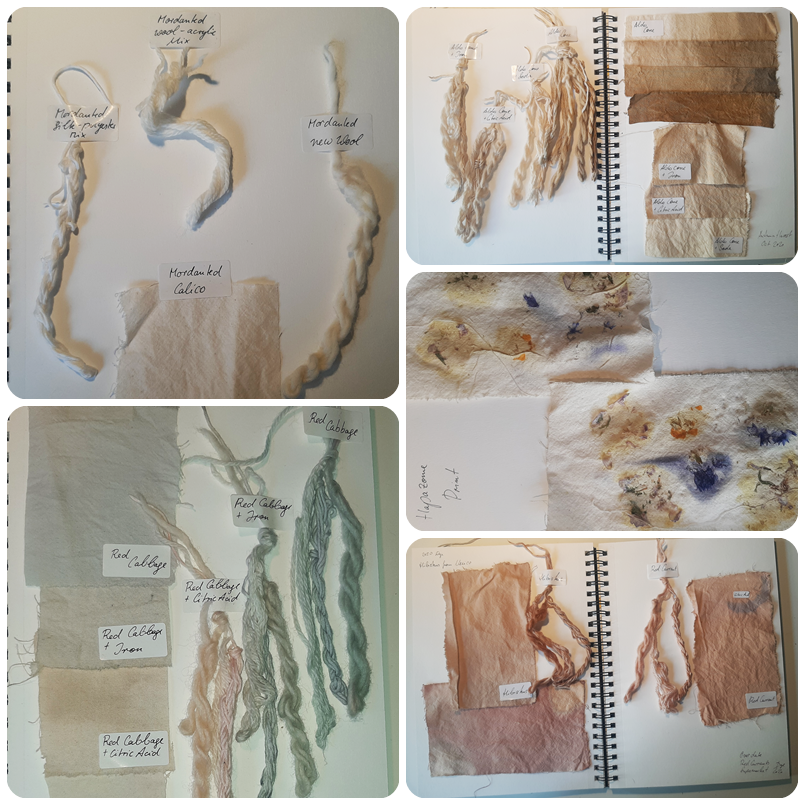
Alum mordanted fibres and fabrics dyed with Aldercone, Red Cabbage, Hibiskus and Red Currants. Afterwards modified with Soda, Citric Acid and Iron. On the right the hapazome print.
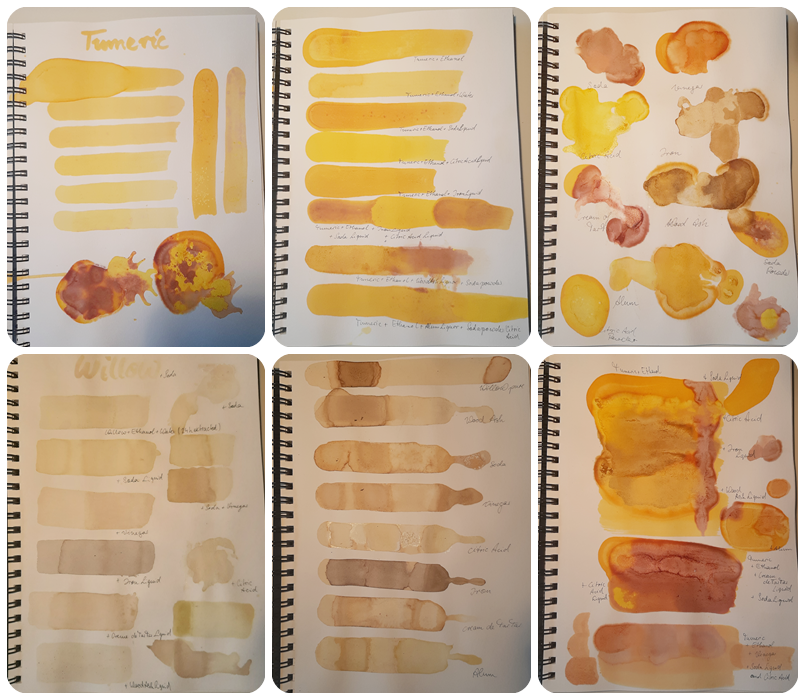
Inks with modifications from Tumeric and Willow leaves.
Research¶
Books I recommend¶
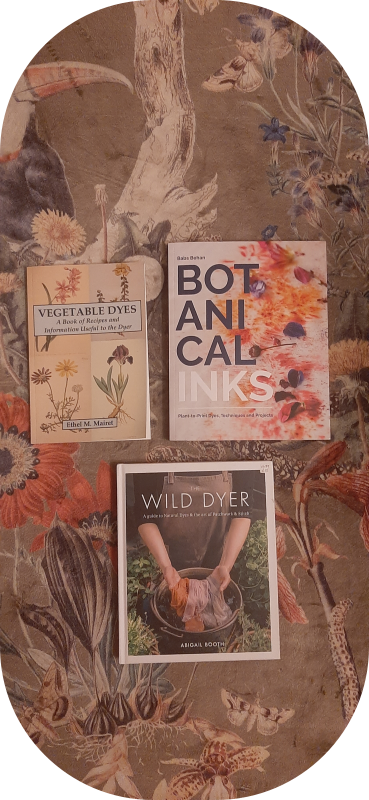
I already bought the book the Wild Dyer on the future fabrics expo in London this year. I decided to order Botanical Inks with additional techniques for dying and paint making. Also I was interested in the old dying techniques and recipes that you can find in the book Vegetable Dyes.
Some links about the dying process, mordants and pigments¶
I researched on differnt recipes and Mordants for Dying and found those pages handy:
- Iron Mordant Recipe
- How to Mordant
- Painting with Milk
- Soy Milk Mordant Recipe
- Soy Bean Mordant
- Mordants and Fabrics
Also here a step by step instruction for Lake pigments with Alum and Soda:
Making Iron Mordant/Modifier and Copper Modifier¶
"A mordant is a substance, typically an inorganic oxide, which is combined with a dye bath to enhance the fastening proces of the dye onto organic fibers. They enhance the light- and wash-fastness of the dye on the fibers, both the protein based and the cellulose based ones. Mordants also have an impact on the final colour...Modifiers are applied after the dye bath to extend the number of shades possible with one dye bath. The same modifier in combination with different mordants will produce different colours as well." (Fabricademy)
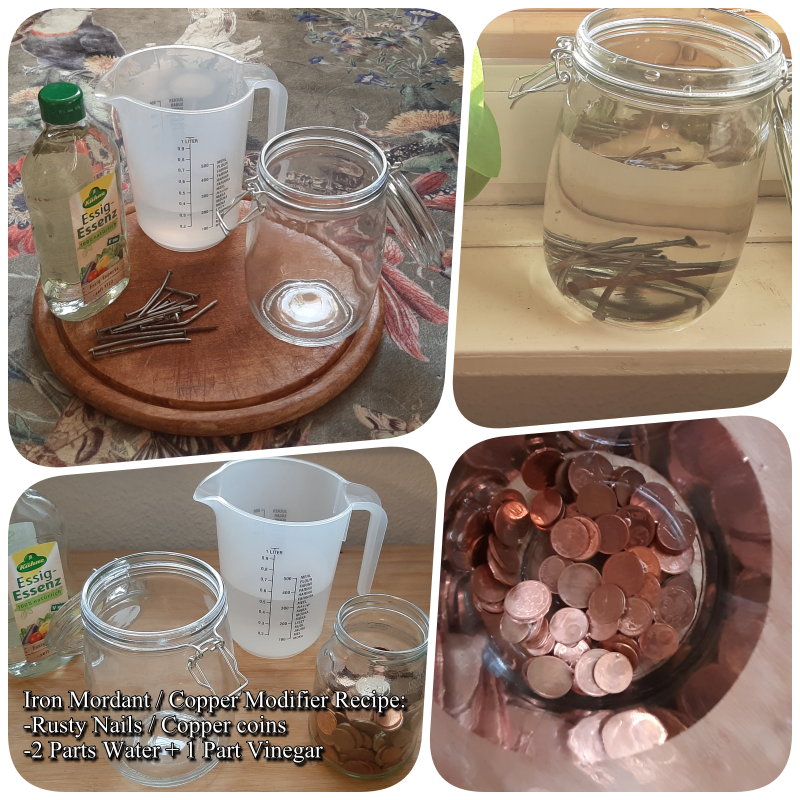
I started to make iron and copper mordant 1 week before the assignment cause it actually needs to sit a few weeks to oxidate and change the colour. The lid should be a little bit open cause the oxidation causes too much pressure in the glas.
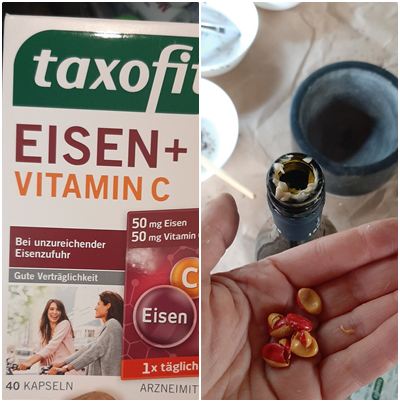
As I didn´t have any mordant ready Adriana told me to mix 5 capsules iron from the drugstore in water. I used an old winebottle of 0.75 l. That is a quick way to get an iron modifier. It is also possible to mix copper sulfate in water.
Harvesting in the Forest¶
First thing I did, was checking my Wild Dyer Book for plant material and collected those in the forest the week before.
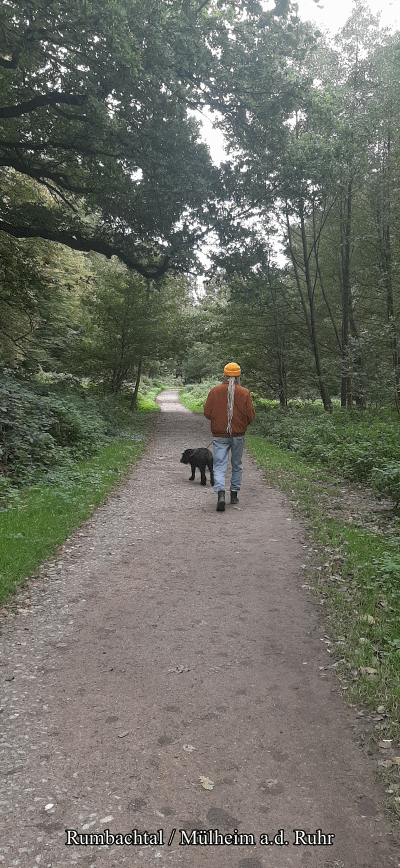

The Autumn Forest and its Dye Material¶
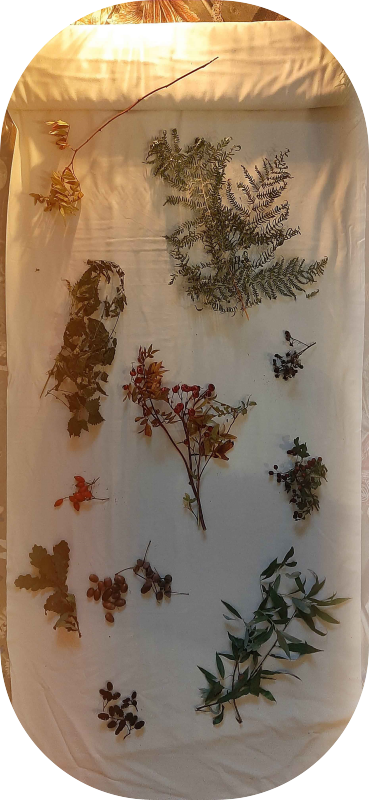
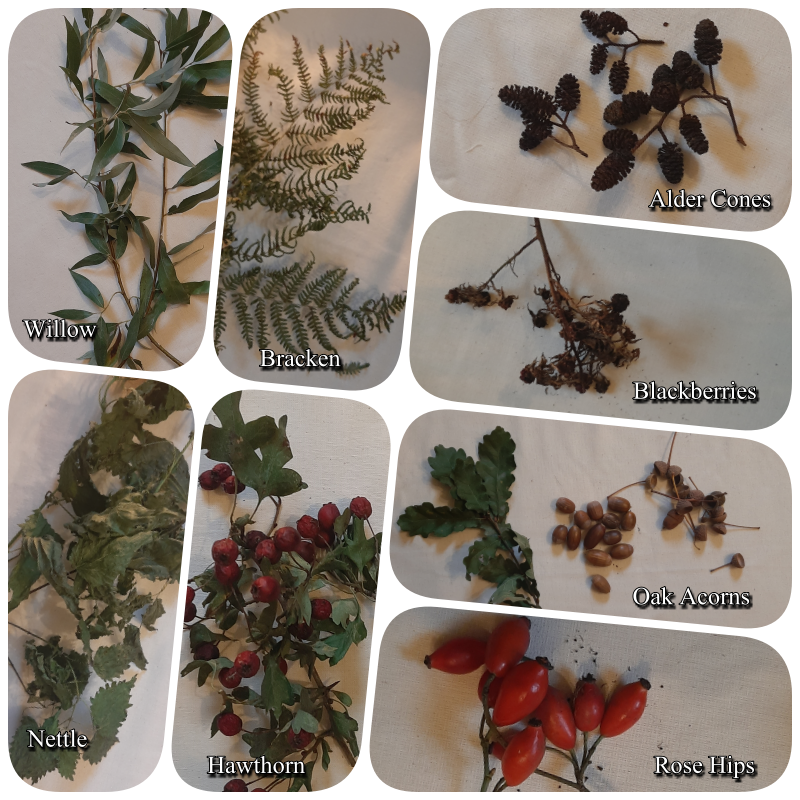
Dying Process¶
In the Garden "Bonnekamphöhe" in Essen¶
I was very happy to be able to make my dying session in that beautiful garden project Bonnekamphöhe in Essen, my home town
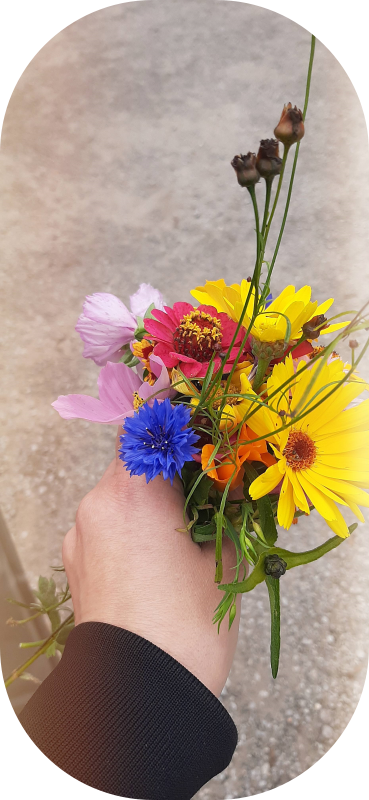
First we visited the "dark farmer" to collect some potatoes for the bonnekamp project. I found some flowers that I wanted to use for the hapazome print technique next to the field, what was a bit surprising cause it was already october.
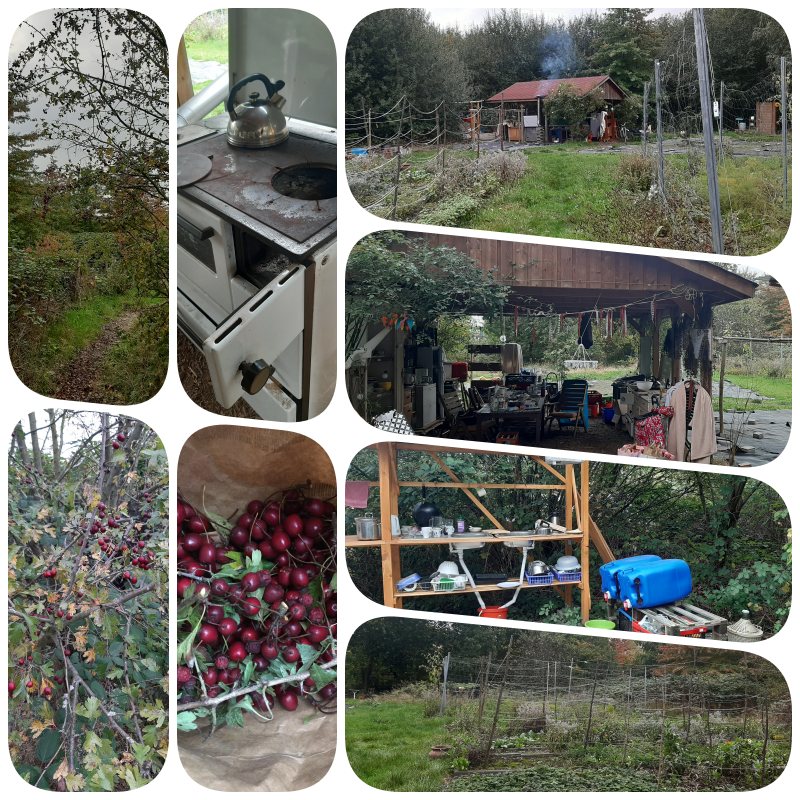
This was my wonderful witch dying kitchen in the garden. Perfect for the Process and maybe also possible to plant dying plants and give workshops in the future. I also collected some Hawthorn and other plants that are growing there ready to be extracted.
Dyers Equipment¶
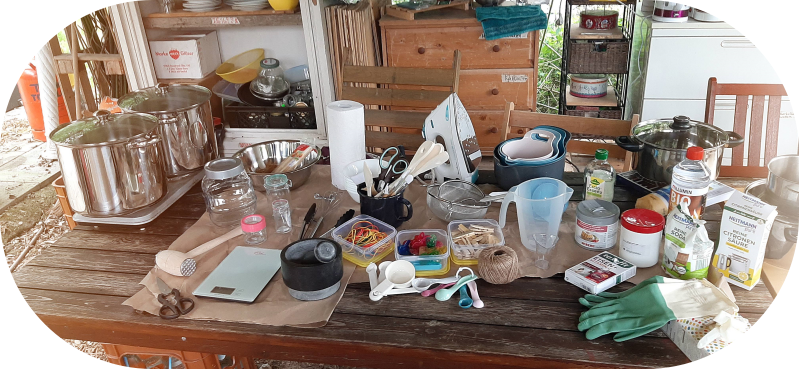
Preparing the Fabrics and Yarns¶
Start weighting your fabric to know how much mordant substance and dye plants you need.
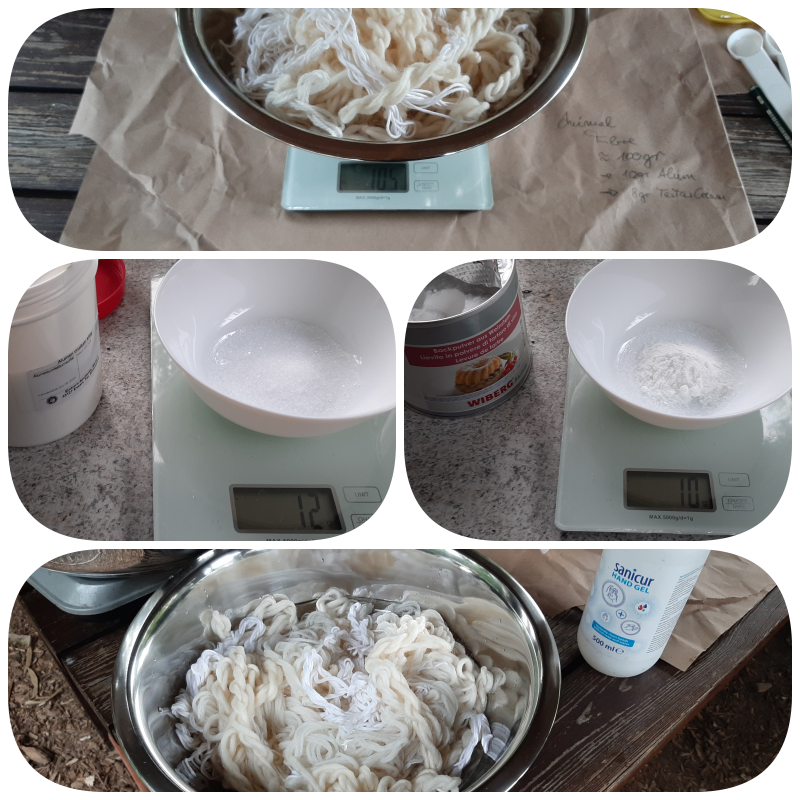
ANIMAL FIBERS "Rinse the fibers gently with luke warm water and a little bit of soap. Keep in mind that to much friction and heat will felt the wool, while it will damage the silk fibers making them dull and brittle. Also sudden temperature changes are not recommended with animal fibers." (Fabricademy)
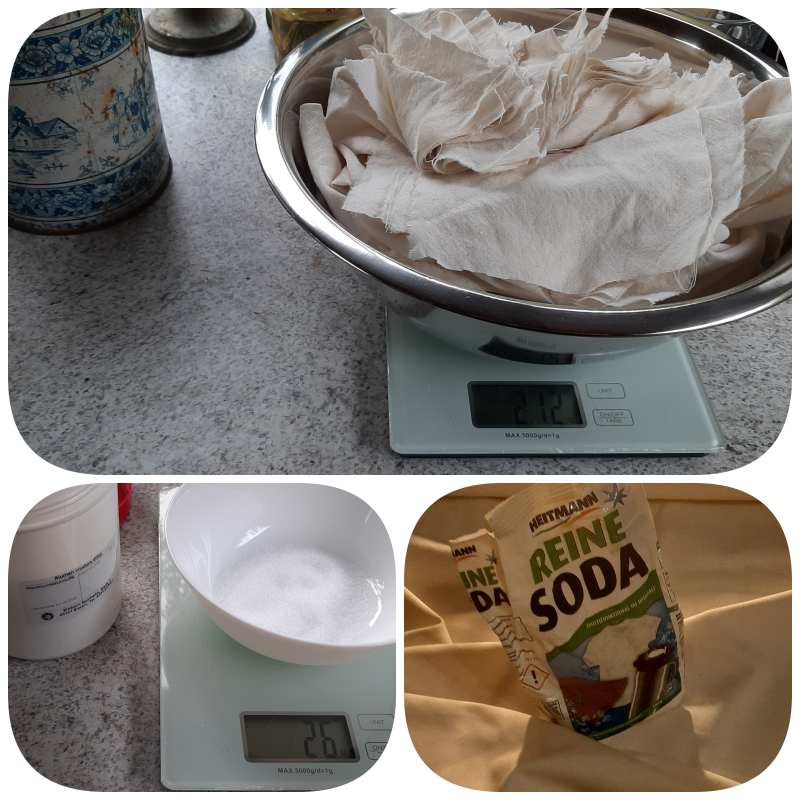
Mordanting the Textiles¶
"Alum can be used to mordant on all kinds of fibers. It helps brightening the colours and assures a good light and wash fastness." (Fabricademy)

100gr. ANIMAL FIBERS to mordant
Enough warm water to cover completely the textiles
10-20% of weight of fibers of Alum
Add 8% of weight of fibers of tartaric acid (the tartaric acid works better when first dissolved in a little bit of boiling water)
Preparing the Vat with Red Cabbage and Alder Cones¶
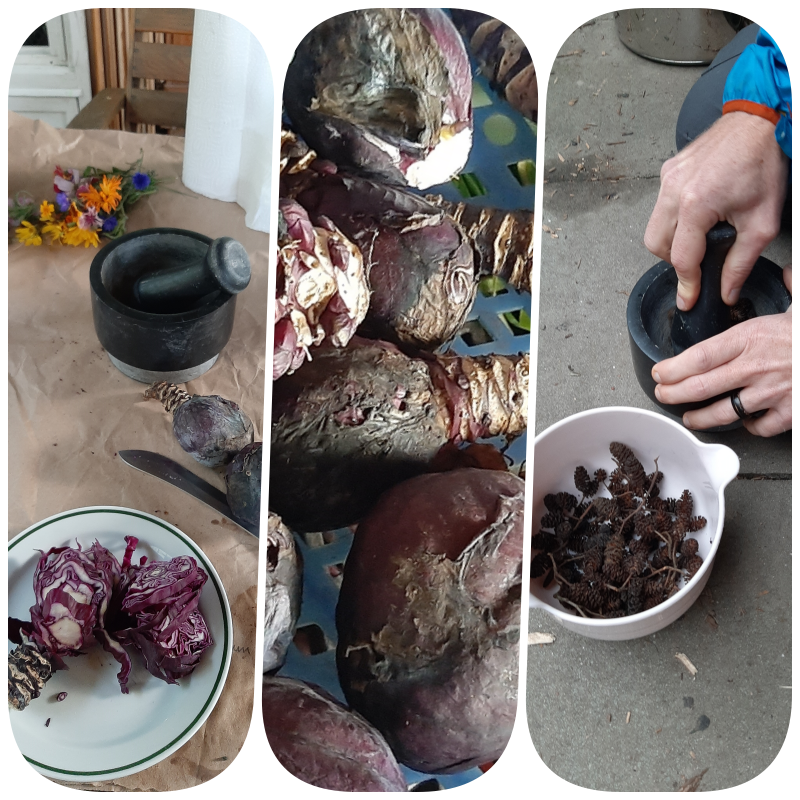
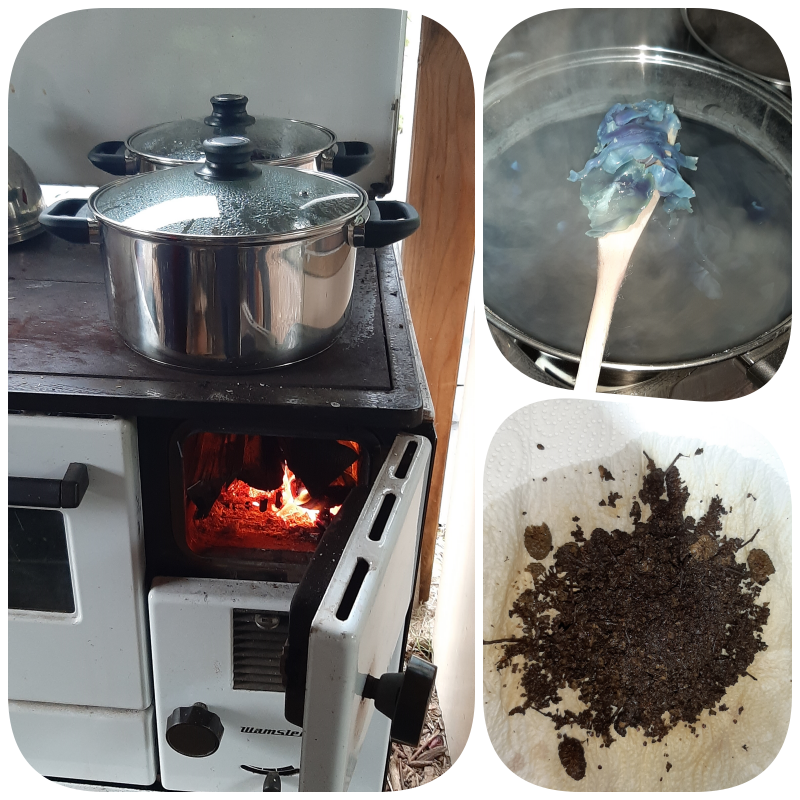
First Dye¶

Modifying Dye¶
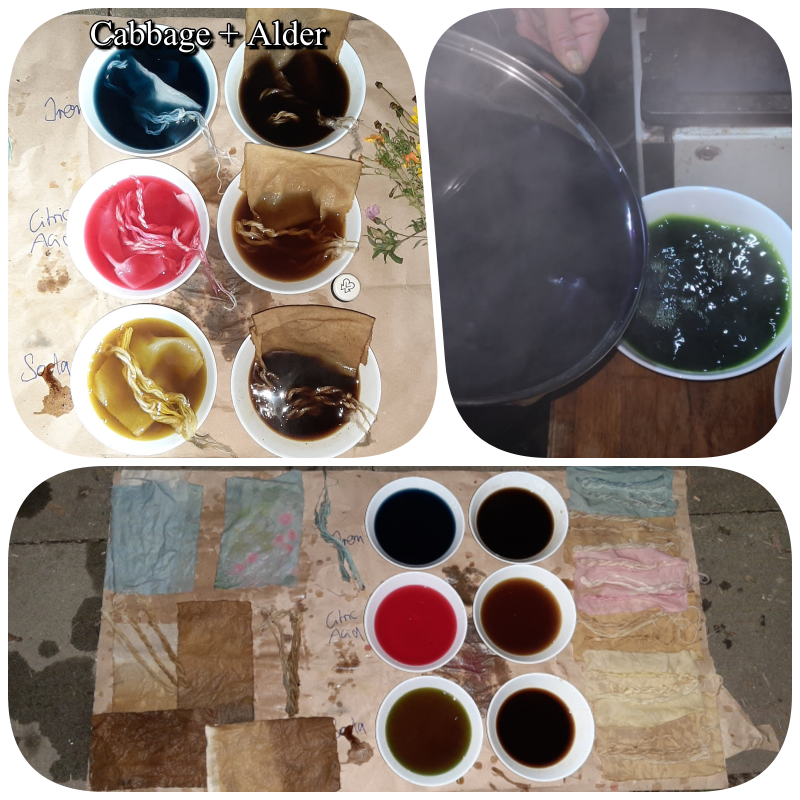
Hapazome Print Technique¶
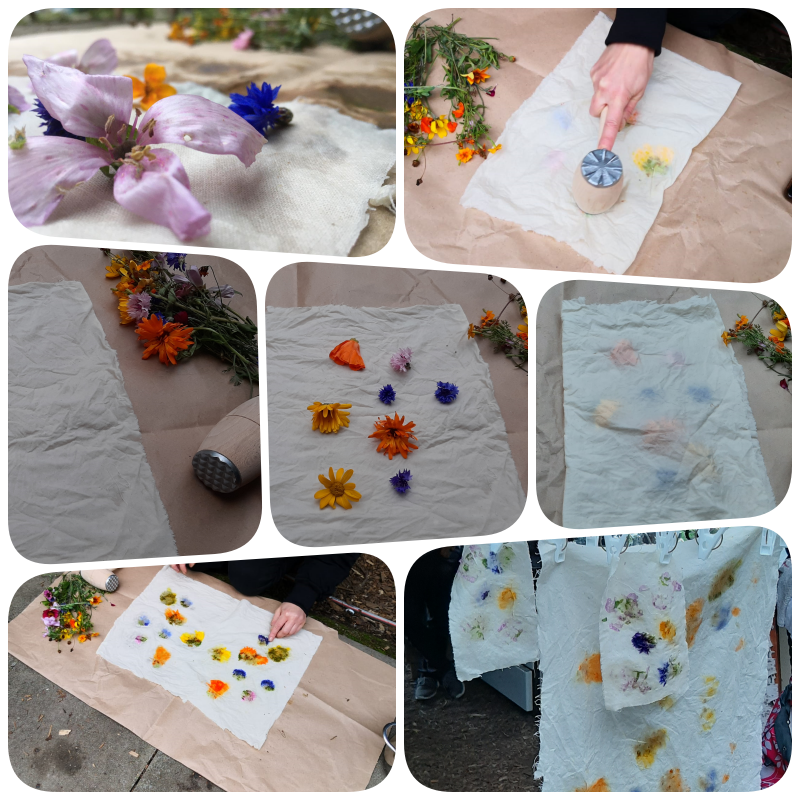
Going Home¶
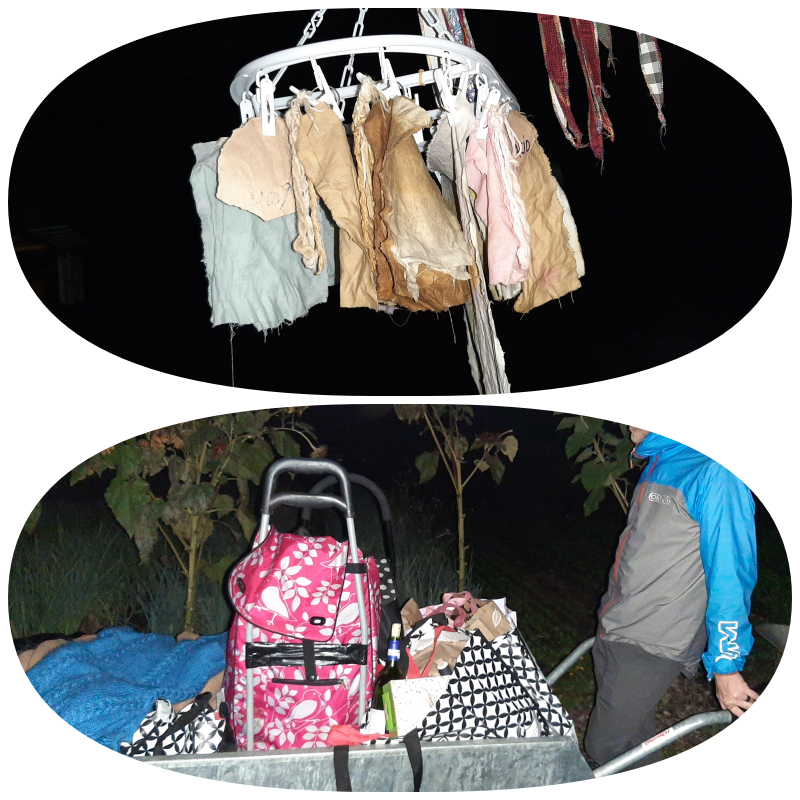
Inks from Nature¶

Tumeric and Willow¶
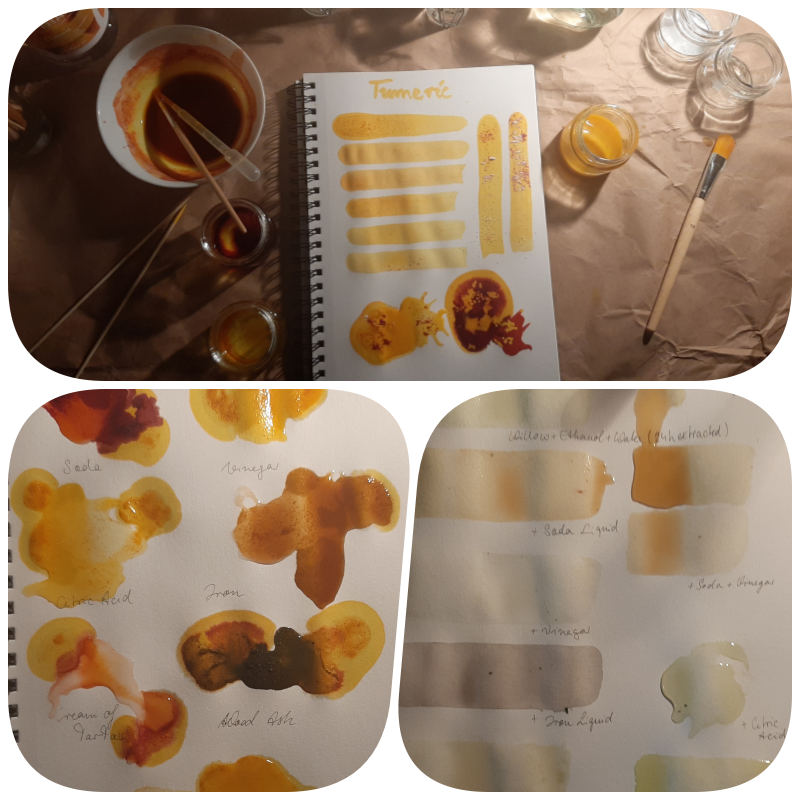
Making Pigments out of dye vat¶
Hibiskus and Red Currants¶
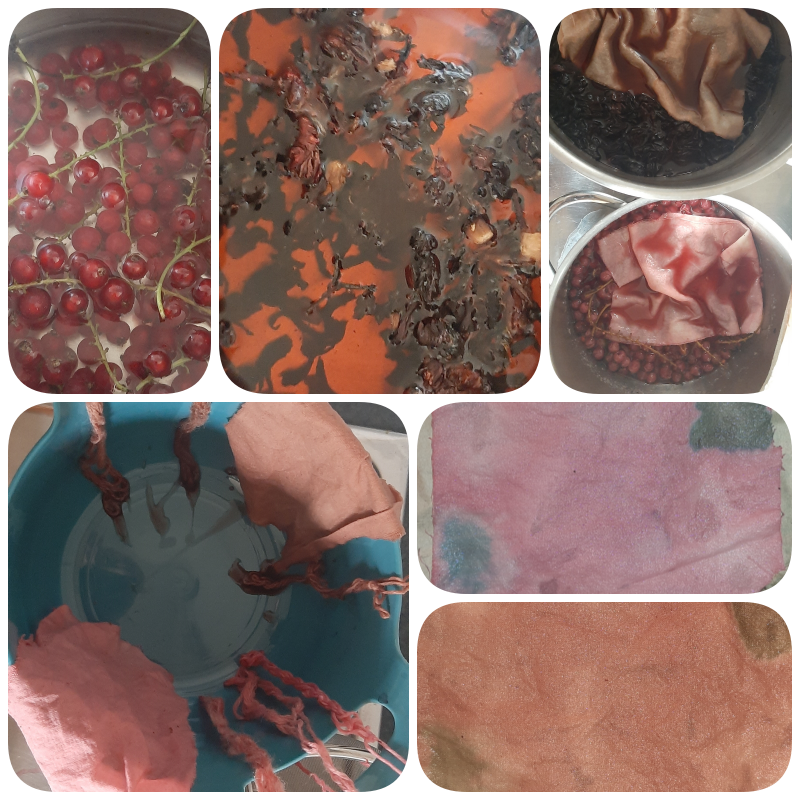
I had some leftover Red Currants that were already moldy. Instead of throwing away, I washed them to use for dying and extracting pigments. I also got some Hibiskus from Mexiko of a friend that was supposed to be old too. I boiled it all 1 to 2 hours untill the berries got white. I still had some mordanted fabrics and yarns and I didn´t want to miss to give it another dye before extracting the pigments.
Process of extracting Pigments¶
I think the Description from Rebecca Desnos on how to make Lake Pigments is very clear so I copied it here to explain my process and have some useful tipps: "Gather your fresh or dried plant matter. Put it in a large enough pot and cover with water. We don’t need as much water as for dyeing fabric or yarn because we want to make a strong solution. Let it sit overnight. The next day simmer it for 1-3 hours to extract the dye. Allow it to cool down or let it sit again over night. Then strain through a muslin cloth."
I didn´t have time to wait two nights and using a muslin cloth what probably would have given more pigments.
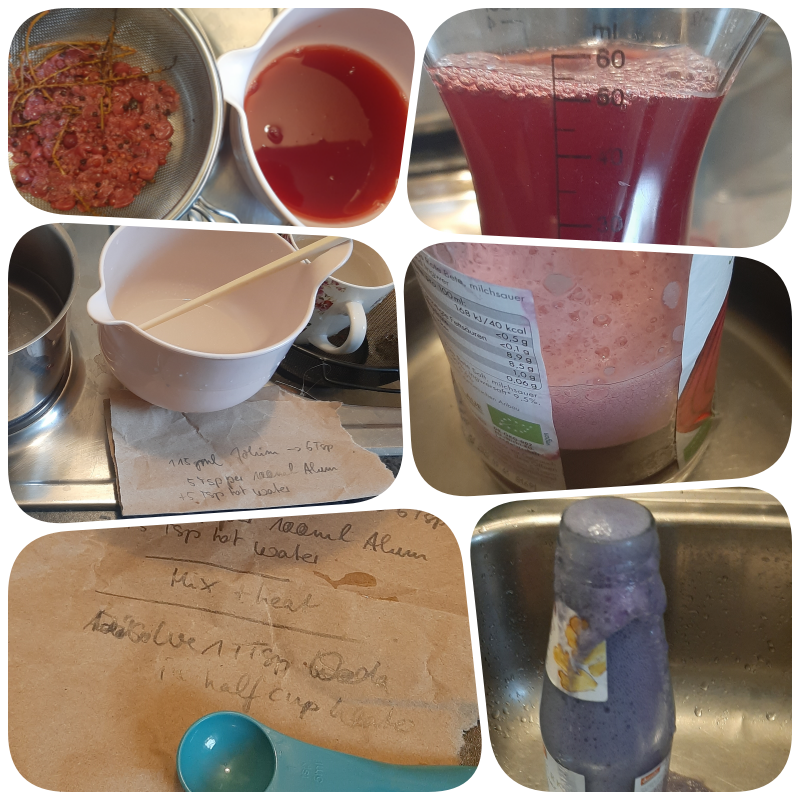
Next we’ll add alum to our dye liquid. Measure the volume of dye and make a note of this.
For every 100 ml dye, prepare 5 tsp of alum solution. To make the alum solution, alum needs to be dissolved in boiling water in this ratio: 5 tsp of alum to 5 tsp of boiling water. Set this aside.
Heat your dye solution to a simmer, then add 5 tsp of alum solution per 100 ml of your dye. This is a rule of thumb and stronger dye solutions may require more alum.
Choose a big enough pot to continue because it will get bubbly and foamy.
Dissolve 1 tbsp of washing soda in half a cup of water. Add this alkaline solution drop by drop. Your dye should start to build foam. Stir, then stop adding the washing soda when it is all foamy.

Fabricademy Lectures: Biochromes¶
Fabricademy 20-21 WEEK 4 BIOCHROMES from Fabricademy, Textile Academy on Vimeo.